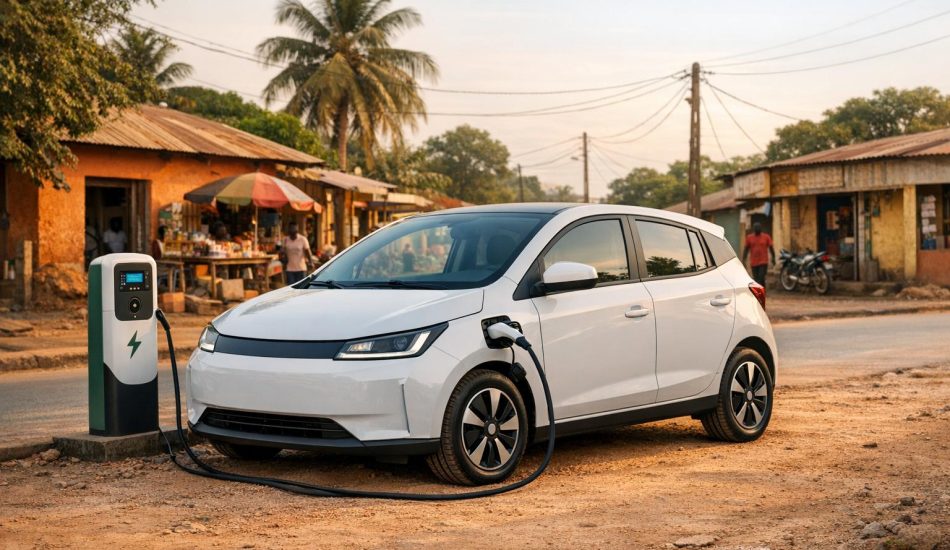
Africa’s electric vehicle (EV) market is growing fast, driven by rising fuel prices, stable electricity costs, and increasing interest in cleaner transportation. However, challenges like high upfront costs, limited charging infrastructure, and tough driving conditions shape consumer preferences. This article highlights the top 10 electric cars in Africa for 2025, focusing on affordability, range, and performance.
Key Takeaways:
- Dayun Yuehu S5: Budget-friendly compact SUV designed for African markets.
- BYD Dolphin: Efficient hatchback with multiple range options.
- Dongfeng Box: Compact urban EV for daily commutes.
- Mini Countryman SE ALL4: Plug-in hybrid with AWD for varied terrains.
- BMW iX3 M Sport: Premium SUV blending luxury and zero emissions.
- Mercedes-Benz EQB 350 4Matic: Dual-motor EV for long-distance travel.
- Volvo C40 Recharge Twin AWD: Stylish but less suited for rugged conditions.
- GWM Ora 03: Retro-inspired hatchback with solid range and local support.
- Volkswagen ID.4: Reliable mid-size SUV with strong after-sales service.
- Tesla Model 3: High-tech sedan with impressive range and performance.
Quick Comparison
| Model | Price Range (USD) | Electric Range (miles) | Key Feature |
|---|---|---|---|
| Dayun Yuehu S5 | Not disclosed | Not disclosed | Affordable compact SUV |
| BYD Dolphin | ~$20,000 | Up to 250 | Efficient city and regional EV |
| Dongfeng Box | ~$15,000 | ~150 | Compact and urban-friendly |
| Mini Countryman SE ALL4 | $35,000–$40,000 | 26 (electric only) | Plug-in hybrid with AWD |
| BMW iX3 M Sport | ~$65,000 | ~285 | Luxury SUV with premium support |
| Mercedes-Benz EQB 350 | ~$55,000 | ~250 | Dual-motor AWD |
| Volvo C40 Recharge | ~$60,000 | ~193 | Sleek design, fast charging |
| GWM Ora 03 | ~$42,500 | ~193 | Retro styling, local support |
| Volkswagen ID.4 | ~$45,000 | ~275 | Reliable SUV for African roads |
| Tesla Model 3 | ~$35,000 | Up to 358 | Advanced tech, long range |
Each vehicle offers unique advantages, from affordability to premium features. Consider factors like driving habits, road conditions, and access to charging stations when choosing your EV.
2025 BYD Dolphin Surf | New Electric Hatchback for South Africa

1. Dayun Yuehu S5
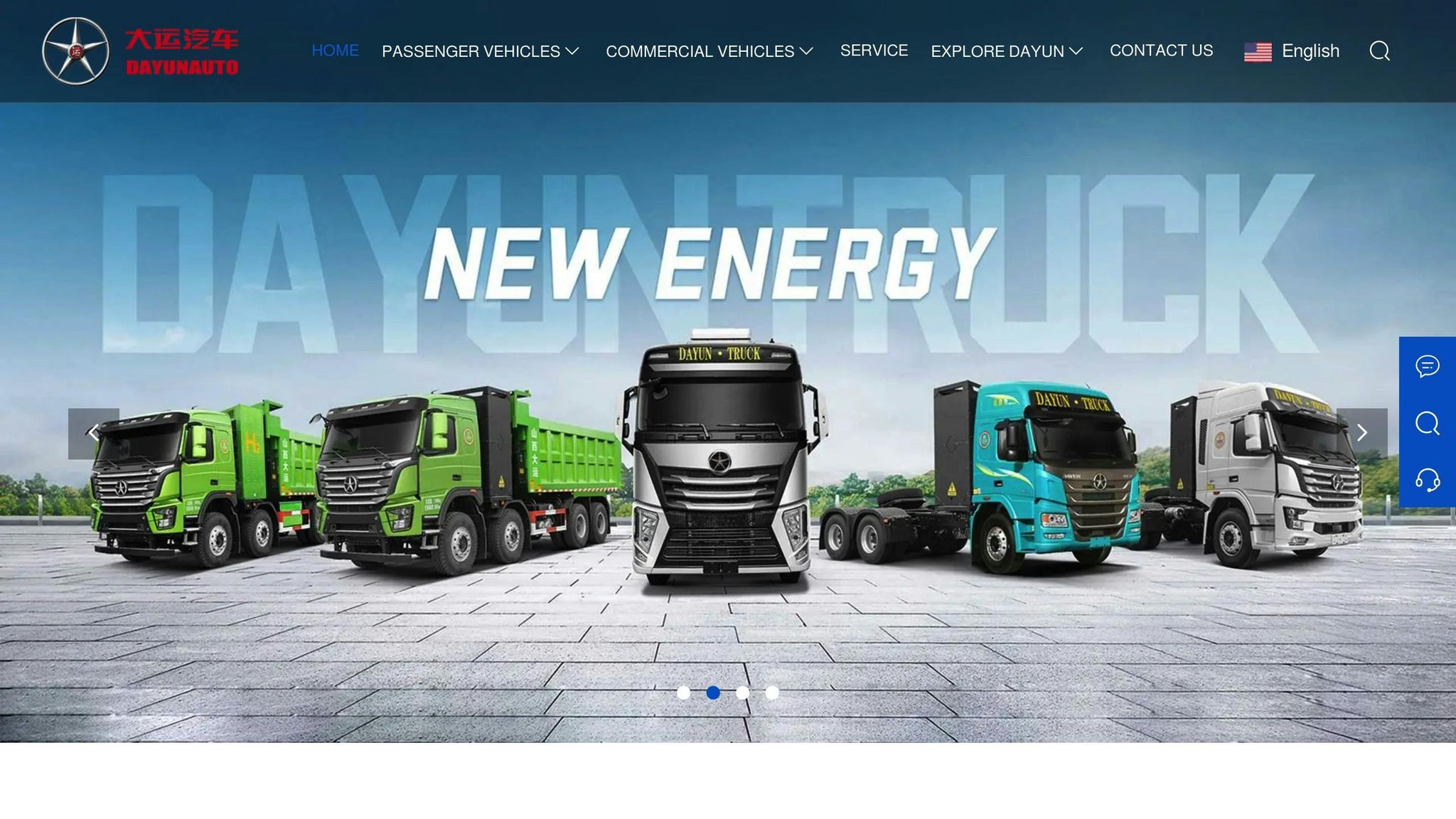
The Dayun Yuehu S5 is a compact SUV from China, designed as an affordable electric vehicle (EV) for the African market. Specific details about its price, driving range, performance, and available support services are not widely shared. For the most accurate and up-to-date information, it’s best to reach out to local distributors in your area.
2. BYD Dolphin
The BYD Dolphin is a compact hatchback designed to cater to a wide range of driving needs. It comes in several variants, each offering different electric ranges and performance levels. One variant stands out with an impressive efficiency of 14 kWh per 100 miles, making it a practical choice for both city driving and longer trips across Africa’s diverse landscapes. Its design reflects the flexibility needed to handle the continent’s unique mix of urban and rural roads.
3. Dongfeng Box

The Dongfeng Box is built with Africa’s bustling urban landscapes in mind. Its compact design makes it perfect for weaving through crowded streets and handling tight spaces. With a range tailored for everyday commutes, it ensures reliability for daily travel. Plus, its powertrain provides instant torque, making it quick and responsive – ideal for stop-and-go traffic and navigating sharp turns in congested areas.
4. Mini Countryman SE ALL4

The Mini Countryman SE ALL4 combines the classic Mini charm with the practicality of all-wheel drive, making it a stylish yet capable choice for navigating the varied terrains of African roads.
Electric Range and Performance
This plug-in hybrid offers an electric range of 26 miles, while its 1.5L turbocharged engine extends the total range to over 270 miles. The ALL4 all-wheel-drive system ensures smooth power distribution and reliable traction, making it a versatile option for everything from city streets to rugged backroads.
Built for African Roads
With a raised ground clearance, durable suspension, and AWD, the Countryman SE ALL4 is well-suited for handling potholes, uneven terrain, and wet conditions. Its compact SUV design makes it ideal for urban driving while still providing enough room for families and cargo. The elevated seating position also enhances visibility, a handy feature for navigating busy streets or rural areas.
Cost and Ownership
Priced between $35,000 and $40,000, this premium vehicle offers long-term savings thanks to its plug-in hybrid system, which reduces fuel consumption. It also has the potential for lower maintenance costs compared to traditional engines, an advantage in regions where charging infrastructure is still developing.
Support and Maintenance
Access to after-sales service and spare parts for European models like the Mini Countryman SE ALL4 can vary across different parts of Africa. This is an important factor to consider for long-term ownership.
5. BMW iX3 M Sport

The BMW iX3 M Sport is a shining example of BMW’s dedication to blending luxury with electric innovation. This high-end electric SUV combines the brand’s signature driving experience with zero-emission technology, offering a refined choice for drivers across the African continent.
Electric Range and Performance
The iX3 M Sport is built to deliver both efficiency and excitement. Its electric powertrain ensures a smooth, responsive ride, while the regenerative braking system enhances energy efficiency. Whether you’re navigating city streets or cruising on highways, this SUV offers a balanced and enjoyable driving experience.
Designed for African Roads
The iX3 M Sport is well-suited for Africa’s diverse road conditions. Its durable build and carefully tuned suspension allow it to handle everything from well-paved highways to rougher terrain. Additionally, the integrated thermal management system helps the battery perform reliably in the high temperatures often encountered in many parts of Africa.
Cost Considerations
While the iX3 M Sport sits in the premium price range, its electric nature brings long-term savings. With fewer moving parts than traditional combustion engines, maintenance costs are significantly lower, making it an attractive option for those considering the total cost of ownership.
After-Sales Support and Parts Availability
BMW ensures that iX3 M Sport owners are supported with a growing network of service centers across Africa. These centers provide access to authorized parts, comprehensive warranty coverage, remote diagnostics, and over-the-air software updates. This extensive support system ensures that owning an iX3 M Sport remains a hassle-free experience.
6. Mercedes-Benz EQB 350 4Matic
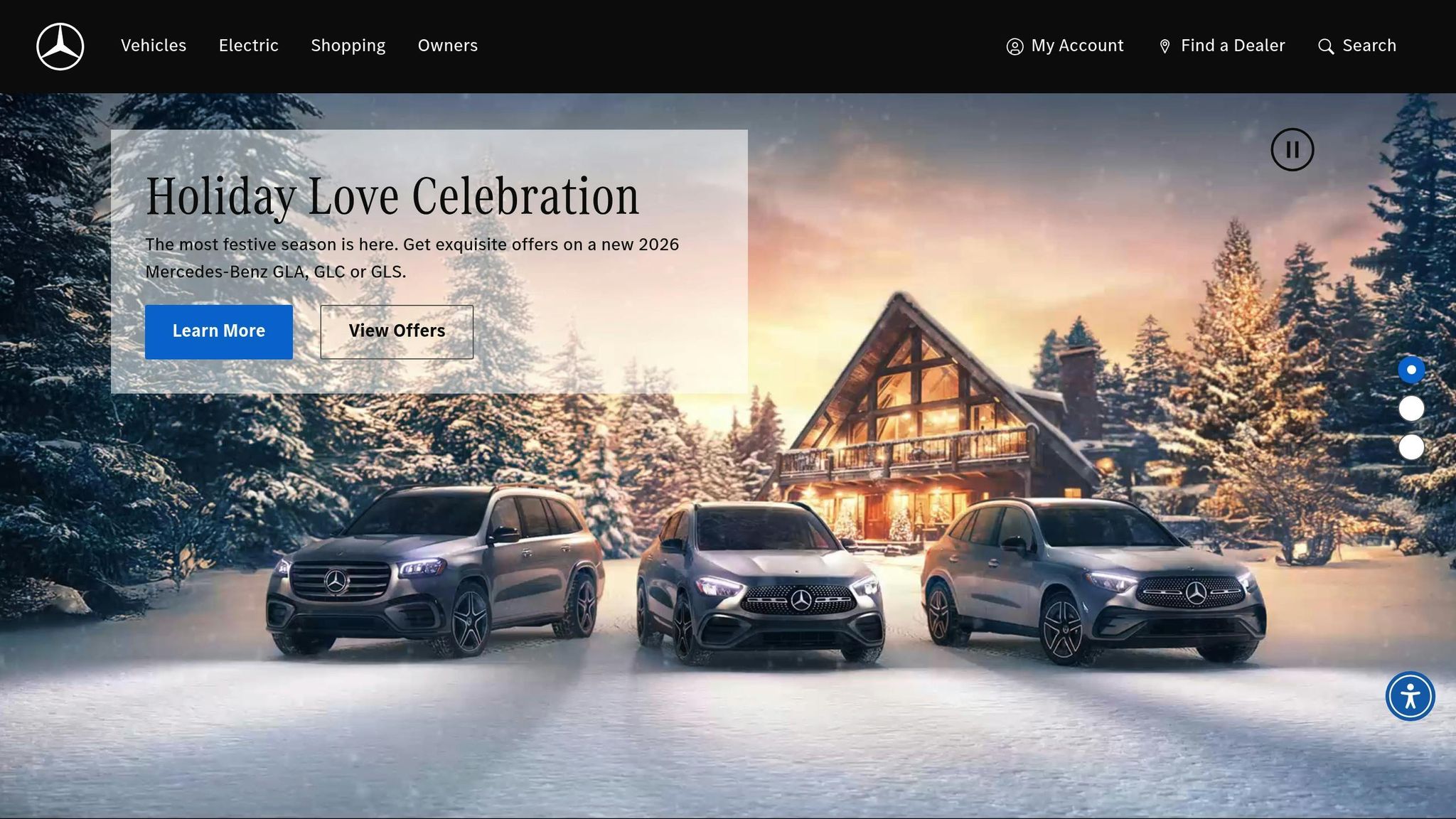
The Mercedes-Benz EQB 350 4Matic comes equipped with a dual-motor all-wheel-drive system, ensuring solid performance on the road. It offers dependable acceleration and a range that works well for both everyday commutes and longer trips between cities. While specific performance data for African markets is still awaited, the vehicle is designed to accommodate long-distance travel, supported by sufficient charging infrastructure.
Up next, let’s see how its performance and pricing compare to other electric vehicles currently available.
sbb-itb-99e19e3
7. Volvo C40 Recharge Twin AWD

The Volvo C40 Recharge Twin AWD combines sleek Scandinavian aesthetics with impressive electric power. However, it may not be the perfect fit for Africa’s diverse and challenging driving conditions.
Electric Range and Performance
Equipped with a dual-motor system, the C40 Recharge Twin AWD delivers solid performance and supports DC fast charging for quicker energy top-ups – provided the infrastructure is available. That said, charging speeds and range can vary significantly depending on the local setup, raising concerns about how well this model fits Africa’s often inconsistent charging networks and rugged terrains.
Suitability for African Driving Conditions
The C40 Recharge does offer decent ground clearance, which can be helpful on uneven or rough roads. However, as one analysis points out:
"Local players have a unique opportunity to dominate the African EV market, as international OEMs are unlikely to heavily invest in Africa-specific EV models. Standard European and US models often do not align with African conditions, including harsh environments and poor road quality."
While its design and performance might shine in more developed markets, adapting to Africa’s road conditions remains a challenge.
Availability of After-Sales Support and Parts
For African buyers, the ownership experience can be tricky. Limited after-sales support and a scarcity of spare parts often lead to long repair times and higher service costs. Take Ethiopia as an example: despite having around 100,000 electric vehicles on its roads, there are notable hurdles:
"While model availability appears to be reasonable in the country, there are reports that garages struggle to source components for repairs, and that deployment of chargers outside of the capital has not kept pace with electric car sales."
This lack of local expertise and infrastructure means repairs can take longer and cost more. Potential buyers need to weigh these factors carefully when considering the total cost of ownership.
8. GWM Ora 03
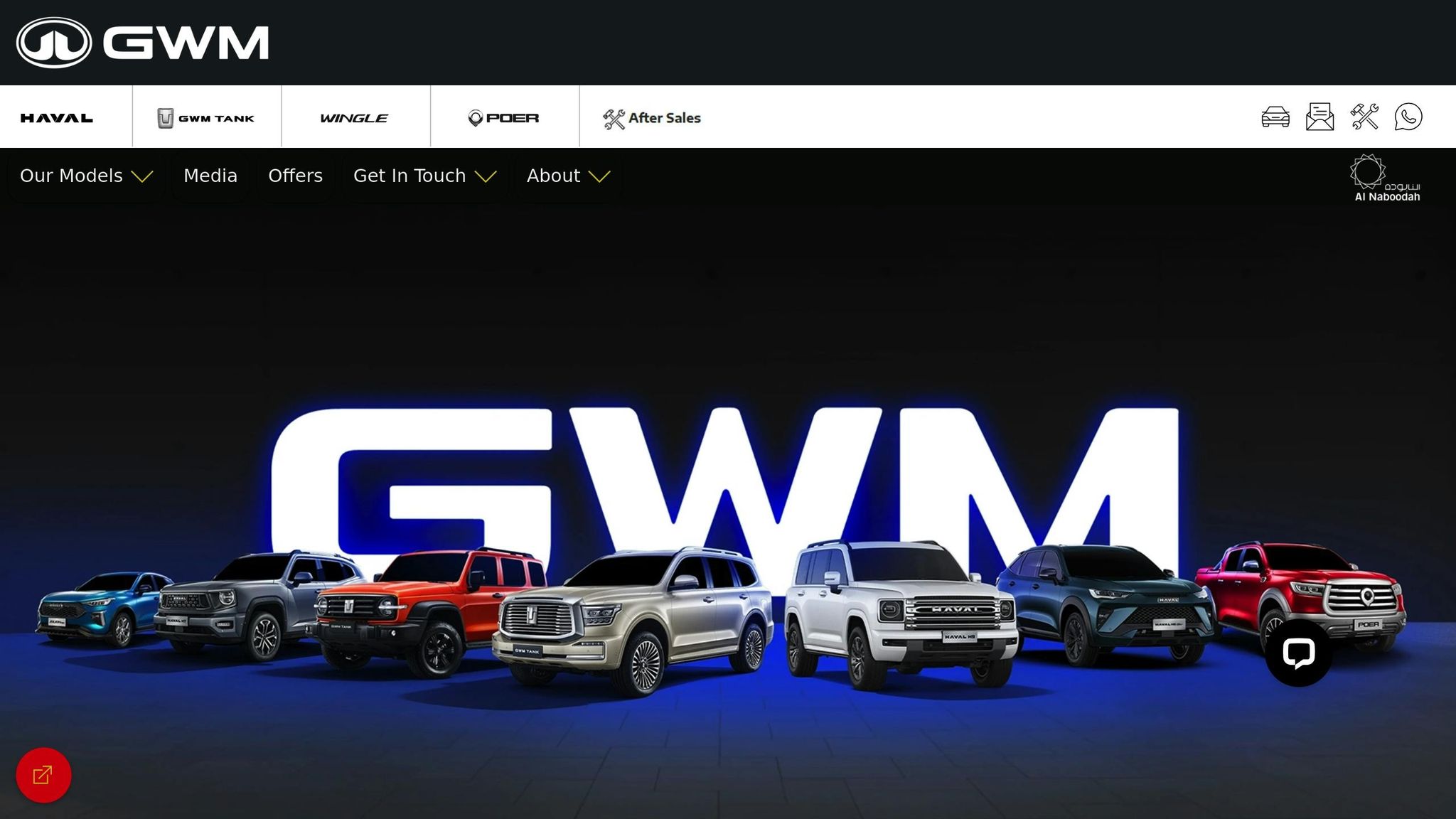
The GWM Ora 03 brings a fresh look to Africa’s electric vehicle market. Designed by former Porsche stylist Emanuel Derta, this compact hatchback draws inspiration from the R56 Mini Cooper and Citroen DS3, giving it a retro yet modern vibe that stands out on the road.
Electric Range and Performance
In terms of performance, the Ora 03 offers 126kW of power, sprinting from 0 to 62 mph (0–100 km/h) in 8.4 seconds. It reaches a top speed of 93 mph (150 km/h) and boasts an electric range of up to 193 miles (310 km). While this range is well-suited for city driving and shorter regional trips, it might present challenges for longer drives, especially given the limitations in charging infrastructure and electricity reliability in certain areas.
Availability of After-Sales Support and Parts
GWM has strengthened its footprint in South Africa with four different models in the local Ora 03 lineup. This presence ensures better access to authorized service centers and genuine parts. However, the availability of support can vary, with urban areas generally better served than more remote locations.
Affordability and Total Cost of Ownership
With a price tag of around $42,500, the Ora 03 combines eye-catching design, reliable performance, and accessible local support. For buyers who value distinctive style and dependable service, it’s a compelling option.
9. Volkswagen ID.4
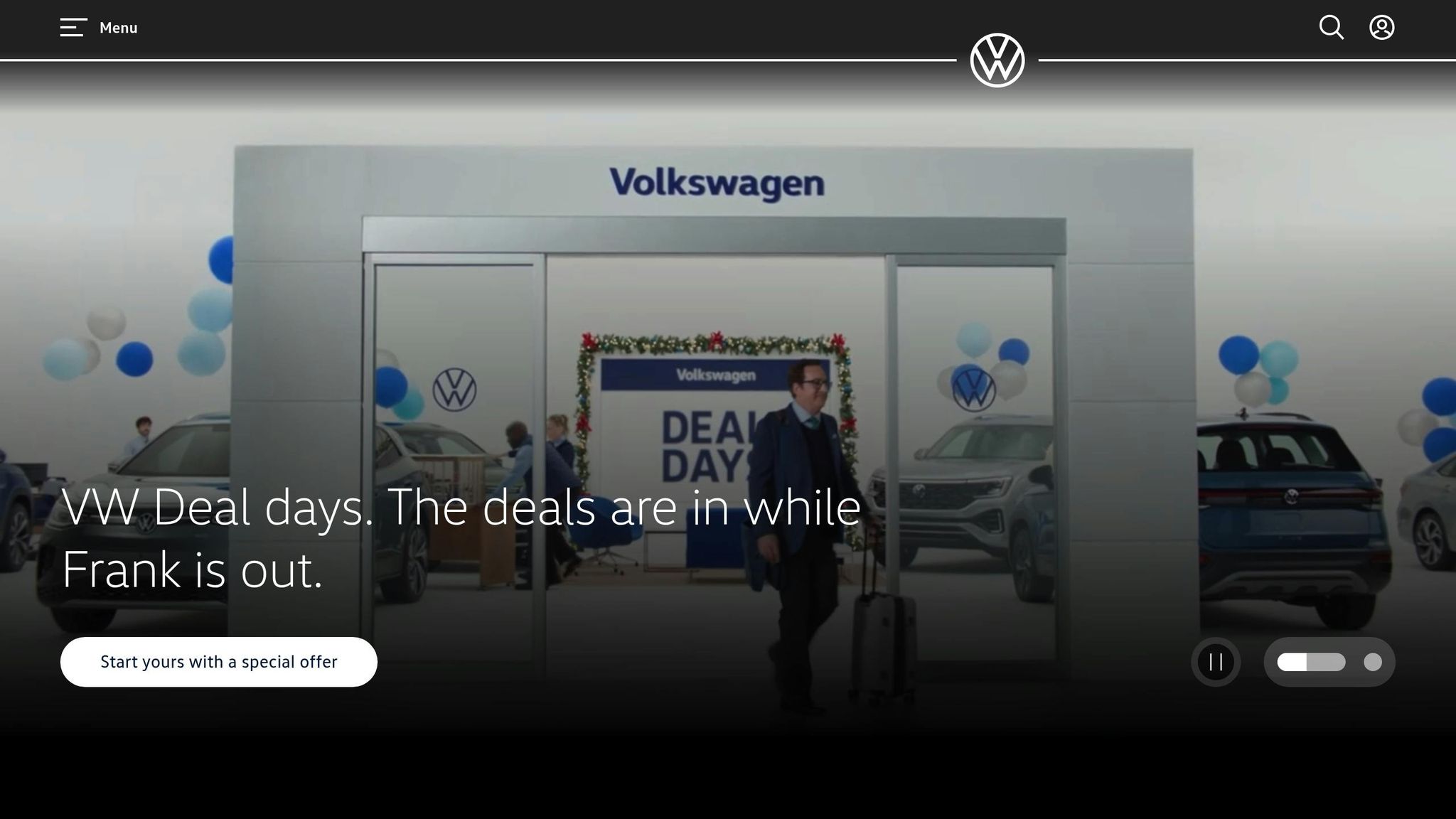
The Volkswagen ID.4 brings German engineering to the forefront, offering a sleek and dependable electric SUV designed for a blend of comfort, performance, and practicality. This mid-size SUV delivers ample interior space, advanced technology, and solid performance, making it a versatile choice for both city commutes and longer road trips.
Electric Range and Performance
The ID.4 is built to provide smooth, responsive acceleration while maintaining energy efficiency, making it ideal for everyday driving. Its well-calibrated battery and powertrain deliver a competitive range on a single charge, which is especially beneficial for intercity travel. This helps reduce concerns about range, even in areas where charging infrastructure is still growing. Its performance is designed to handle a variety of road conditions with ease.
Built for African Roads
With its higher ground clearance, the ID.4 is a great fit for African roads, which often feature varied terrain and occasional rough patches. The suspension system and optional all-wheel drive add extra stability on uneven surfaces. Additionally, an advanced thermal management system ensures the battery stays reliable, even in hot climates, making it well-suited for extended use in regions with high temperatures.
After-Sales Support and Parts Availability
Volkswagen’s strong presence in African markets, including South Africa, Kenya, and Nigeria, ensures reliable after-sales service. Authorized dealerships provide comprehensive maintenance and repair options, while the global supply chain for parts ensures availability even in more remote locations. This robust support network enhances the overall ownership experience.
Costs and Value
As a premium electric SUV, the ID.4 offers a mix of advanced features and efficient energy use. While the initial purchase price may be higher, its low maintenance costs and energy savings contribute to a more favorable total cost of ownership. For buyers who value German craftsmanship, cutting-edge technology, and extended driving range, the ID.4 is a strong contender in the growing electric vehicle market.
10. Tesla Model 3
The Tesla Model 3 is a highly regarded electric sedan that blends cutting-edge technology with impressive performance. This compact luxury vehicle has gained popularity across Africa, especially among tech-savvy professionals and early adopters who appreciate its blend of modern features and status. With its sleek design, advanced autopilot capabilities, and over-the-air software updates, it stands out in the premium electric car market.
Electric Range and Performance
The Model 3 offers two standout variants: the Long Range model, which can travel up to 358 miles on a single charge, and the Performance model, capable of accelerating from 0 to 60 mph in just 3.1 seconds. For drivers in regions with limited charging infrastructure, this extended range can make a significant difference.
Its dual-motor all-wheel drive system enhances traction across different road conditions, while regenerative braking not only boosts efficiency but also reduces wear on the brakes. Additionally, the battery’s thermal management system ensures reliable performance, even in extreme temperatures.
Adaptability to African Roads
While the Model 3’s ground clearance is lower than that of SUVs, its advanced traction control and stability systems help it handle challenging road conditions. Routine software updates keep the car’s performance optimized without requiring a trip to the service center.
The minimalist interior, centered around a touchscreen interface, reduces the number of physical components that could be affected by dust or harsh weather. However, the lower ride height can be an issue on unpaved roads or areas with large potholes, making the Model 3 more suitable for urban areas and well-maintained highways.
After-Sales Support and Parts Availability
Tesla’s service network in Africa is still growing, with official service centers primarily located in South Africa. In other countries, such as Kenya and Nigeria, Tesla has collaborated with local technicians to provide basic maintenance. However, more complex repairs often require imported parts, which can lead to longer wait times and higher costs.
The Model 3’s advanced diagnostics allow many issues to be identified remotely, and Tesla’s mobile service program can handle some repairs at the owner’s location. Still, limited access to parts and specialized expertise remains a challenge for buyers in regions outside major cities.
Cost and Ownership Considerations
The starting price for the Model 3 is around $35,000, but import duties and taxes can significantly increase the final cost in African markets. Over time, the car’s low maintenance needs and energy efficiency help offset the higher upfront price.
With electricity often cheaper than gasoline in many regions, the Model 3 offers competitive operating costs. Its strong resale value and minimal scheduled maintenance further enhance its appeal for those who can manage the initial investment and have access to reliable charging infrastructure.
Price and Performance Comparison
Let’s break down the essentials of price and performance to help you make an informed decision about electric vehicles in Africa.
When choosing an EV, it’s important to weigh your budget, driving habits, and the unique conditions of your area. The available models cater to a wide spectrum of needs, from cost-effective options to high-end premium vehicles. These vehicles differ not just in their upfront price but also in factors like electric range, power output, and charging capabilities. It’s worth noting that local elements – such as import duties, taxes, and whether the vehicle is assembled locally – can heavily impact the final price tag depending on the market.
Performance-wise, there are several key aspects to consider: acceleration, battery range, and charging speed. These features influence not only the driving experience but also the long-term practicality of owning an EV. For instance, a vehicle with a faster charging recovery time or a longer battery range could offer more convenience, especially in regions where charging infrastructure is still developing.
Don’t forget to account for the total cost of ownership, which goes beyond the initial purchase price. Expenses like insurance, maintenance, and energy costs can vary across Africa’s diverse markets. To simplify your decision-making process, EV24.africa provides clear pricing details and comprehensive specifications, ensuring you have all the information needed to choose the EV that best fits your lifestyle and Africa’s growing EV market.
Conclusion
Selecting the right electric vehicle (EV) for Africa’s diverse roads and driving conditions comes down to aligning your needs, budget, and the realities of your local environment. The ten models discussed in this guide each bring distinct benefits tailored to Africa’s varied markets.
Think about how you drive and your access to charging infrastructure. For instance, if you’re navigating city streets daily, options like the BYD Dolphin or Dongfeng Box might be just what you need. On the other hand, if you’re covering longer distances, premium models like the BMW iX3 M Sport or Mercedes-Benz EQB 350 4Matic could be a better fit.
Don’t overlook local factors like import duties, regional assembly programs, and the availability of dealer support. These can significantly influence the total cost of ownership. Beyond the sticker price, consider ongoing costs like maintenance and parts availability, which can differ widely across Africa’s 54 nations.
As the EV market in Africa grows, platforms like EV24.africa remain a valuable resource, offering clear pricing and detailed specifications to help you make an informed decision – whether you’re stepping into the EV world for the first time or looking to upgrade.
FAQs
What should I consider when choosing an electric car for driving in Africa?
When choosing an electric car for driving in Africa, it’s essential to match the vehicle to your specific needs and the environment you’ll be navigating. Start by thinking about where you’ll be driving most often. Will you stick to urban areas with smoother roads, or do you plan to venture into rural regions where tougher terrain might be a challenge? This choice will influence the car’s range and features like ground clearance and suspension.
Another key factor is the availability of charging stations in your area. If you’re planning longer trips, prioritize vehicles with a dependable range and fast-charging capabilities to avoid being stranded. And don’t overlook practical considerations like the car’s price, maintenance costs, and how well it handles high temperatures. These details can make a big difference in your overall driving experience.
How does charging infrastructure impact the practicality of owning an electric vehicle in Africa?
Charging infrastructure is a key factor in shaping how convenient it is to own an electric vehicle (EV) in Africa. Without enough charging stations, both long-distance travel and everyday use can become difficult, particularly in regions where infrastructure is still growing.
To make EVs a more practical option, there’s a push to increase the number of reliable and easy-to-access charging points. Automakers and local governments are stepping up with solutions tailored to Africa’s specific needs. For example, solar-powered chargers and mobile charging units are being developed to tackle these hurdles. As these efforts continue, owning an EV is gradually becoming a more realistic option across the continent.
What incentives or support programs are available for electric vehicle owners in Africa?
Several African nations are rolling out programs and incentives to boost electric vehicle (EV) adoption. Take Rwanda, for instance – it waives VAT and import duties on EVs, spare parts, and charging equipment. Over in Kenya, tax breaks are in place for electric buses, bicycles, and motorcycles. South Africa is actively considering tax incentives while investing in green energy to support the shift to e-mobility. Meanwhile, Malawi has cut import duties, VAT, and excise taxes on EVs with power ratings under 100 kW.
These efforts aim to make EVs more affordable and accessible, while also tackling regional challenges like infrastructure limitations and cost barriers. As EV adoption gains momentum, more African countries are expected to announce similar initiatives in the near future.




